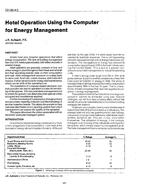Natura:;L draft is produced in an upward passage in which high temperature gas flows. The power of natural draft 9,epends on the height of the passage and the gas density at the entrance and cooling condition of the passage. If such a draft is applied to small size combustion equipment, the temperature of combustion gas cannot be too low, because the power of the draft decreases as the gas is cooled.
On the other hand, in an inverted U-shaped passage, a natural draft. is produced when the gas flowing thr-ough the-passage is cooled in the direction of · flow. The natural draft depends on the density difference of gas between the upward and downward part of the passage. The power of the draft increases steadily as the temperature of the gas cools as it flows through the downward part of the passage. From the above, in the case of applying the draft to combustion equipment, it is possible to save a great deal of heat by cooling the combustion gas. In order to make clear the characteristics of the draft produced in an in~erted U passage, the power of the natural draft is calculated analytically from the fundamental equations of the flow through the passage. Several factors are investigated which influence the power of the draft. As the natural draft-proqured in an upward passage has quite different characteristics from the produced in an inverted u passage, both drafts are compared. The values of the natural draft produced in an inverted u passage are obtained by experiments and are compared with the analytical values.
Citation: ASHRAE Transactions, Volume 82, Part 2, Seattle, WA
Product Details
- Published:
- 1976
- Number of Pages:
- 12
- File Size:
- 1 file , 920 KB
- Product Code(s):
- D-SE-2412


